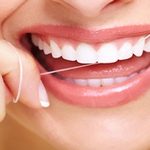
Fillings
Get your teeth sparkling and prevent dental disease

Fillings are needed when the tooth has either been affected by decay, is broken, or has some developmental anomaly. As well as restoring function, fillings can be natural looking as well. Many people do not want silver fillings that
contain mercury, to show when they laugh or smile, as they are maybe considered aesthetically undesirable.
White fillings are made from a composite resin material that comes in different tooth shades, to look like a natural tooth. They can also be used to restore small gaps in teeth, and used in reshaping teeth.
The benefits of dental composites, is that they are tooth coloured and hence aesthetically more pleasing. Furthermore, unlike metal fillings white fillings are adhesive to the tooth, which results in more tooth preservation during preparation. The capability to expand reduces stresses on teeth.
Bridges
Bridging the missing teeth gaps in your smile with crowns.
 Bridges are ideal for people who don’t like dentures and only have one or two teeth missing.
Bridges are ideal for people who don’t like dentures and only have one or two teeth missing.
Bridges are usually made by specially preparing and crowning the teeth on either side of the gap and attaching a false tooth in the middle. In other words, a dental bridge is used to bridge a gap (missing tooth/teeth) between healthy teeth. They are fixed in the same way as crowns. These bridges are usually made of precious metal bonded to porcelain. Sometimes other non-precious metals are used in the base to give it extra strength.
Adhesive bridges are another way of bridging a gap, and less of the tooth needs removing. These bridges are made up of a false tooth with metal ‘wings’ on either side. These wings are made to bond to the teeth on either side, with very little drilling involved. Instead, the teeth are roughened and the bridge is fitted using a very strong composite resin. Bridges are only possible if you have enough strong teeth with good bone support. We will help you decide which is the best way of replacing missing teeth.
Dentures
Well-made dentures look and feel perfect as replacement for your missing teeth.

Dentures
Dentures (usually referred to as “false teeth”) are removable appliances that are used to restore missing teeth.
They can be made for the upper and lower jaws and are constructed from an acrylic material that is specifically moulded to the individual’s jaw contours. Dentures can be used to replace one or multiple teeth.
The procedure involves a series of appointments, which include taking impressions, recording the correct tooth size and shape, and a try-in stage to ensure a comfortable and desirable outcome. Your opinions during the fabrication are also of paramount importance in the success of this treatment.
We will also discuss and advise you on other options for replacing missing teeth as considered appropriate for each individual case.
Root Canal
Treating the inner infection and saving the tooth
 Root canal treatment (also called endodontics) is needed when the blood or nerve supply of the tooth (known as the pulp) is infected through decay or injury. You may not feel any pain in the early stages of the infection. If the pulp becomes infected, the infection may spread through the root canal system of the tooth. This may eventually lead to an abscess. An abscess is an inflamed area in which pus collects and can cause swelling of the tissues around the tooth. The symptoms of an abscess can range from a dull ache to severe pain and the tooth may be tender when you bite. If root canal treatment is not carried out, the infection will spread and the tooth may need to be taken out.
Root canal treatment (also called endodontics) is needed when the blood or nerve supply of the tooth (known as the pulp) is infected through decay or injury. You may not feel any pain in the early stages of the infection. If the pulp becomes infected, the infection may spread through the root canal system of the tooth. This may eventually lead to an abscess. An abscess is an inflamed area in which pus collects and can cause swelling of the tissues around the tooth. The symptoms of an abscess can range from a dull ache to severe pain and the tooth may be tender when you bite. If root canal treatment is not carried out, the infection will spread and the tooth may need to be taken out.
The aim of the treatment is to remove all infection from the root canal. The root is then cleaned and filled to prevent any further infection.
Root canal treatment is a skilled and time-consuming procedure. Most courses of treatment will involve two or more visits to your dentist.
At the first appointment, the infected pulp is removed, and any abscesses can be drained. The root canal is then cleaned and shaped ready for the filling. A temporary filling is put in and the tooth is left to settle.
The tooth is checked at a later visit and when all the infection has cleared, the tooth is permanently filled.
Crowns
A covering cap to maintain the integrity of your tooth and to improve aesthetics

A crown is an artificial restoration that fits over the remaining part of a prepared tooth, making it strong and giving it the shape of a natural tooth. A crown is sometimes known as a ‘cap’.
Crowns are an ideal restoration for teeth that have been broken, or have been weakened by decay or a very large filling. A crown could be used for a number of other reasons, for instance:
you may have discoloured fillings and would like to improve the appearance of the tooth you may have had a root filling which will need a crown to protect what is left of the tooth. It may help hold a bridge or denture firmly in place.
The dentist will prepare the tooth to the ideal shape for the crown. Once the tooth is shaped, the dentist will take an impression (mould) of the prepared tooth. The impressions will then be sent to the dental technician, along with an appropriate shade and other information needed for the crown to be made.
A temporary crown will be made so that you can use the tooth while you wait for the crown to be made. This crown may be more noticeable but is only a temporary measure.
When you and your dentist are happy with the fit and appearance of the new crown it will be fixed in place with special dental cement or adhesive.
Hygiene
Get your teeth sparkling and prevent dental disease
 Dental hygienists provide clinical and educational care to help patients achieve good oral hygiene and avoid gum disease.
Dental hygienists provide clinical and educational care to help patients achieve good oral hygiene and avoid gum disease.
They work closely with a dentist to give care that is tailored to your needs. The hygienist’s main work is to professionally clean the patient’s teeth. They are uniquely qualified to assist in the prevention and treatment of gum disease by scaling and polishing teeth, and developing home care plans with patients to maintain their oral health.
Cleaning teeth efficiently is a far more complex and skilled procedure than most people realise. Hygienists identify those areas where patients have difficulty in removing plaque and work with them to modify their tooth brushing technique to ensure effective cleaning.
Oral Surgery
Extractions, Wisdom Teeth and Apicectomy

Complex dental extraction- extraction of difficult or broken teeth and roots where it may require sectioning of the multiple roots or removing minimal bone to facilitate easy removal.
Postoperatively patient may experience some pain and swelling.
Wisdom tooth removal- surgical removal of upper or lower wisdom tooth/teeth under local anaesthetic
The impacted lower wisdom tooth when indicated for removal requires possible small cut on the gum margin and some local bone removal to allow extraction. Wound is closed with dissolving stitches.
Postoperatively patients may experience pain, swelling, possible bruise for few days. There is an extremely remote risk of nerve damage leading to temporary or permanent numbness of lip, chin and tongue on the affected side.
Apicectomy- This procedure involves surgical removal of the tips of the infected roots of front teeth where root canal treatment has failed and has led to persistent infection in order to salvage the tooth.
A small incision on the gum line allows the dental surgeon to access the infected area where the offending root tip is apicected, cleaned and filled to prevent leakage. Wound is closed with dissolving stitches.
Patient may experience pain, swelling
All the patients are explained in detail with regards to post-operative care and instruction along with written instructions.
Why Use Us?
- A dedicated team of experienced dentist and friendly staff
- Latest techniques and materials
- Strong commitment to continued professional development
- Personalised, caring approach in relaxed environment
- Providing a clear explanation of your treatment plan following detail consultation regarding your concerns, questions and requirements
- Affordable fees clearly explained
- Sympathetic and relaxed treatment approach for nervous patients
- Same day treatment and long appointments available
- Safeguarding patients and our staff
- Adhering to code of patient confidentiality
- Strictly following guidelines for sterilisation of instrument and cross infection control procedures





